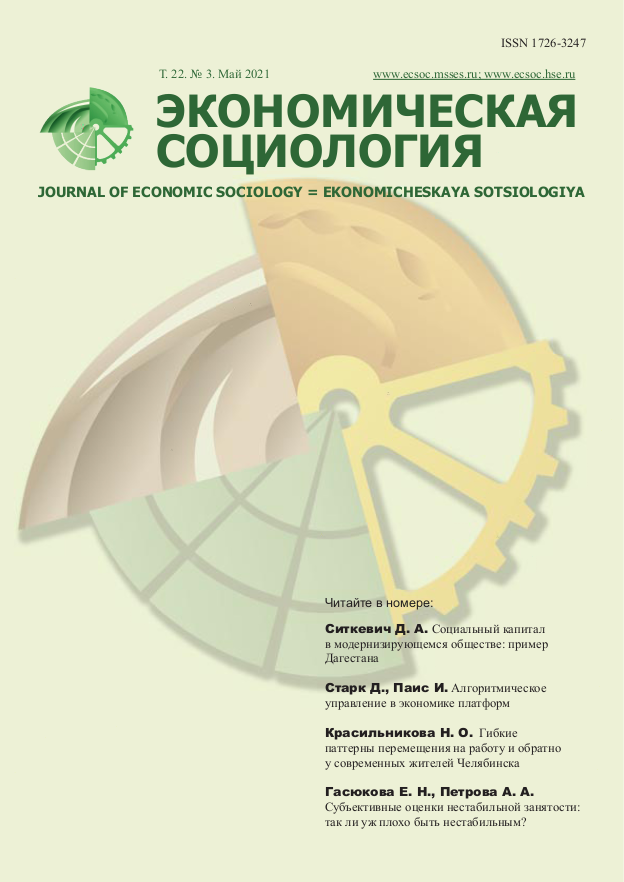Flexible Commuting Patterns by Current Residents of Chelyabinsk
Abstract
Digitization is changing the organization of work. Work is becoming independent of time and place, which affects changes in mobility patterns. This article explores the commuting patterns of current residents of Soviet-designed industrial cities with strictly delineated contours of practice and commuting patterns. Using a case study of the city of Chelyabinsk, this study proposes a typology of residential mobility patterns that varies in relation to employment. For this purpose, Hägerstrand’s theory of the temporal and spatial constraints of mobility was used. By analyzing quantitative data collected in February 2020 through a standardized street survey, three types of commuting patterns were identified: “flexible,” “temporally flexible,” and “regular.” Each type of pattern is described by quantitative characteristics, such as employment sector, form of employment, and place of residence. This study extends the understanding of what commuting patterns in current Russian cities might look like. It demonstrates the dominance of the “temporally flexible” commuting patterns of residents of Chelyabinsk, designed as an industrial center with regular commuting patterns. While the stufy does not provide a certain depth of analysis, it can be taken as a starting point in understanding individual mobility patterns in Russian cities. The results of the study may be of interest to researchers on work and urban mobility, as well as to city planners and policy makers on social and transport issues.













